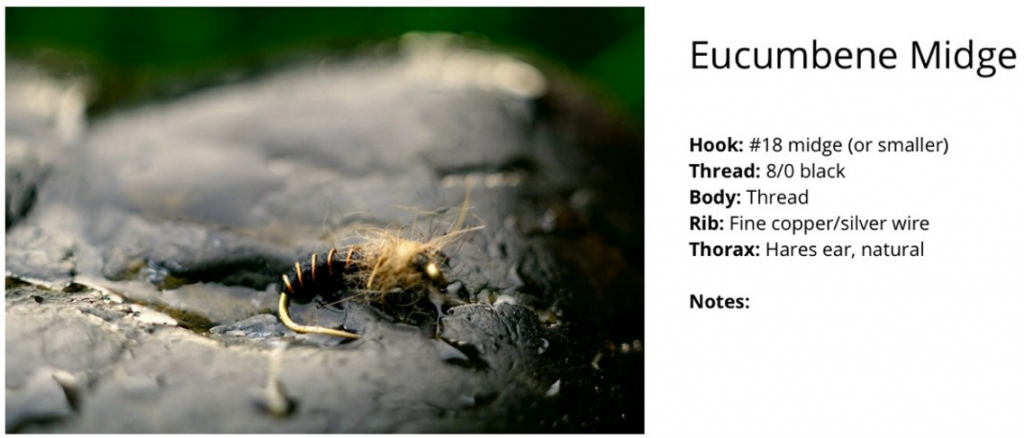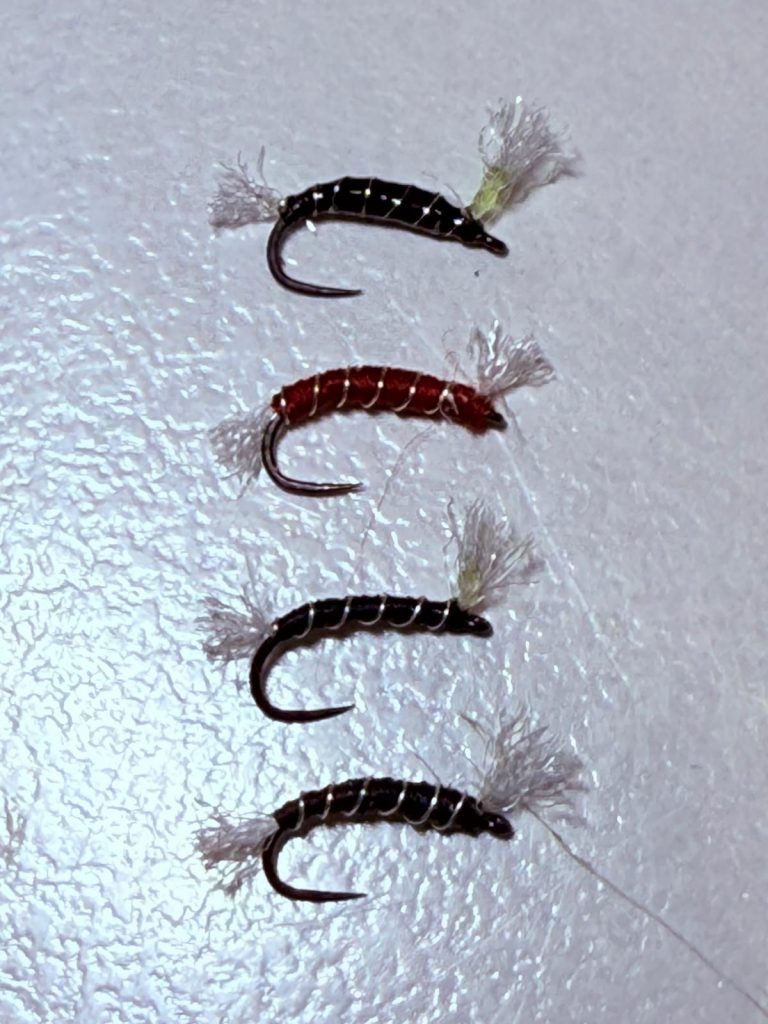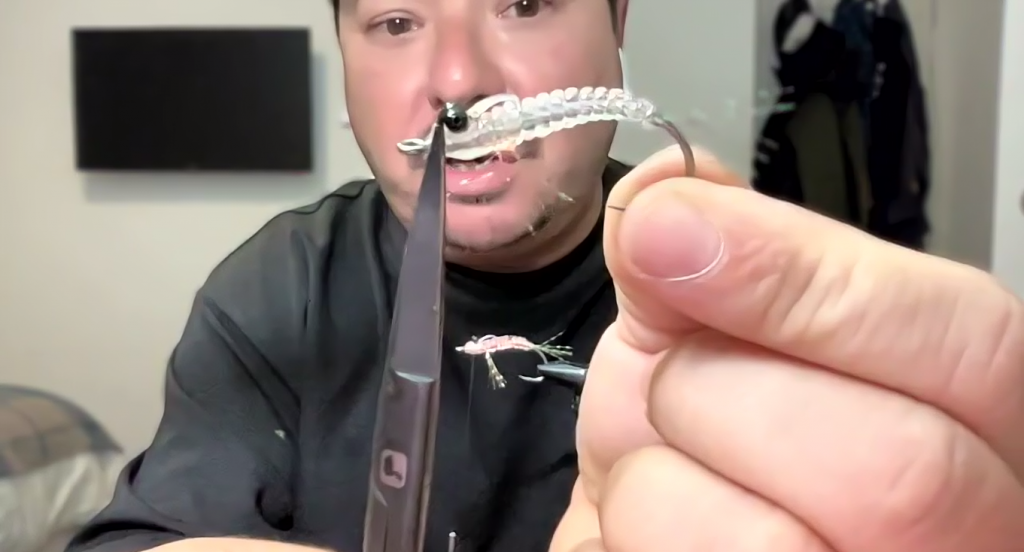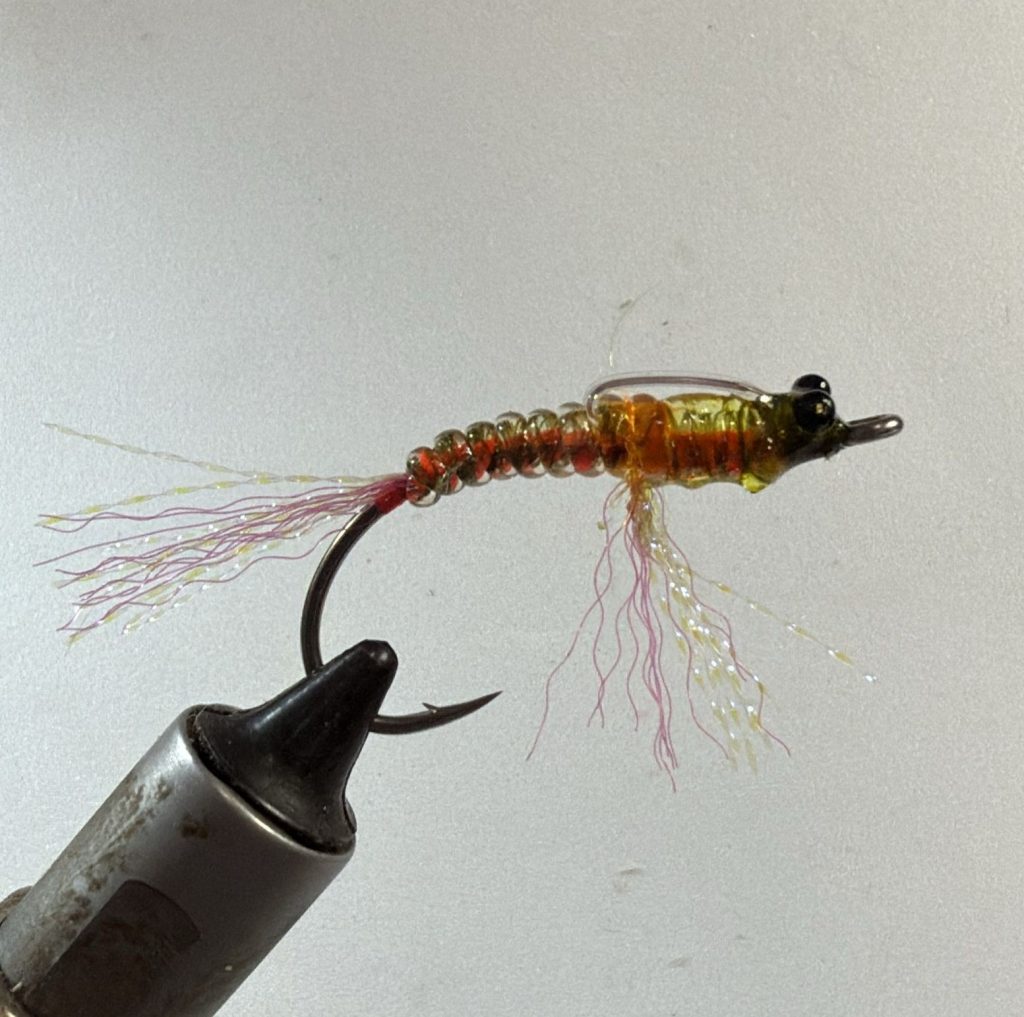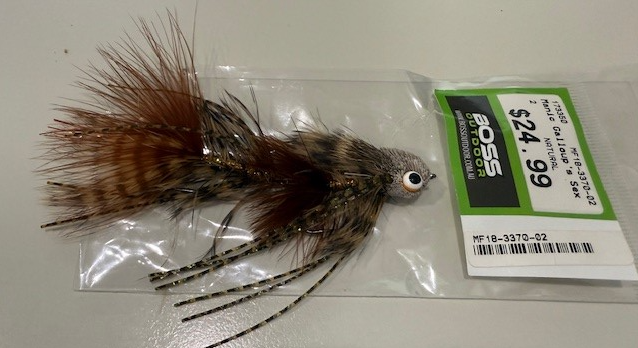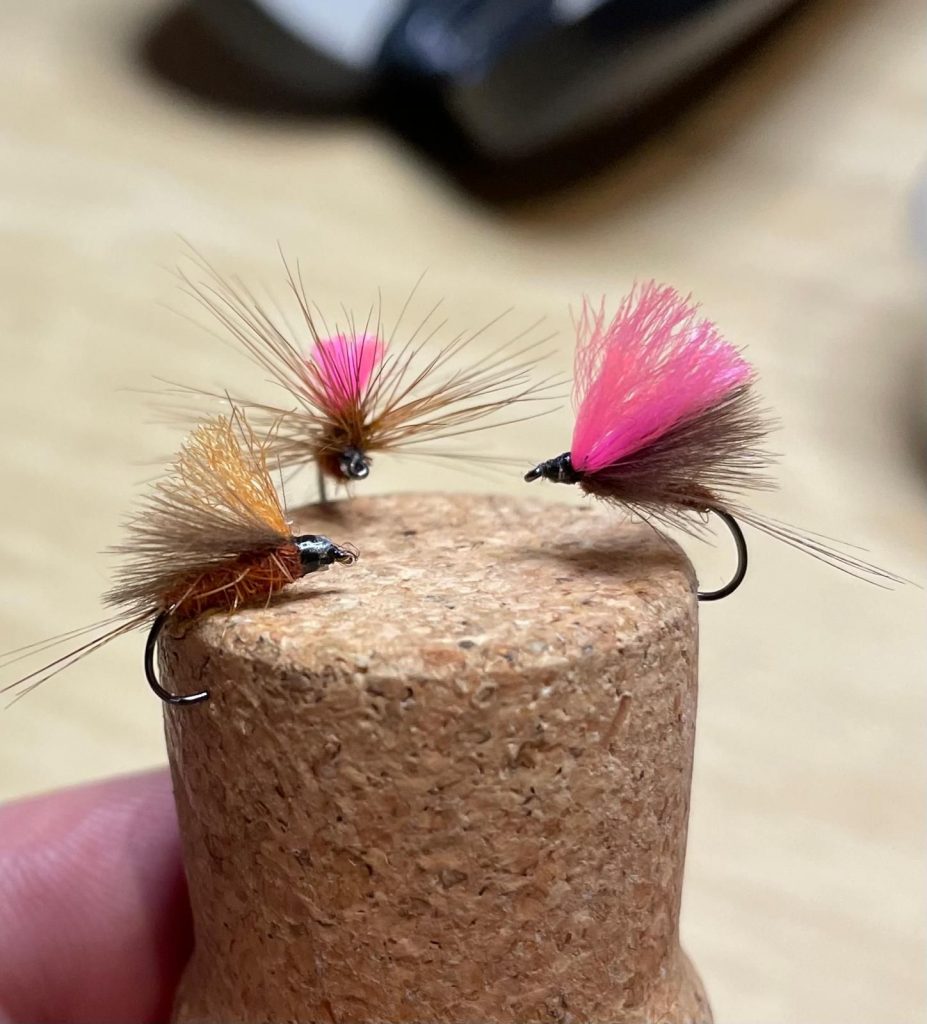Below are the recipes and some links for viewing, these are for the fly tying that was led by Lachy.
Pheasant Tailed Nymph
Unweighted version
Hook: Hanak H 230 or H 280 or sturdy wet fly hook sz 12 (but can go down to sz 20). Tiemco TMC 100SP-BL also works well
Weight: lead wire optional or use unweighted as a dropper with a weighted nymph or split shot
Thread: brown or rusty coloured thread in 70 Denier. I prefer Brown Semperfli nano silk in 50D
Tail, Abdomen, Wingcase and Legs: Natural Pheasant Tail fibres
Thorax: Peacock herl
Rib: Copper wire in size 0.2mm or UTC Brassy size
Video link – can be used as a guide: https://www.youtube.com/watch?v=jXG_0bcrWBE
Blue Collared Pheasant Tail Nymph (aka The Blue Ninja)
Hook: Dohiku HDJ in size 14, 16 and 18 or your preferred jig nymph hook
Bead: Copper coloured tungsten bead. Normally go 3.5mm on sz 14, 3.0mm on sz 16 and so on. But it also works well sizing up the bead on a smaller hook eg 3.5mm bead on sz 16 hook, 3.0mm bead on sz 18 and so on.
Tail: Coq de Leon (CDL) preferably in Ginger Speckle, but any CDL will do
Rib: Copper wire in size 0.2mm or UTC Brassy size
Collar: Uni mylar 1/32” in Holo lt Blue, alternatives Semperfli Holographic Tinsel 1/32” in Kingfisher colour, or Wapsi/UTC Holo Tinsel medium in blue
Resin: Solarez UV bone dry thin or your preferred thin, clear UV resin
Video link – mine uses slightly different materials and works well in our region but this is a useful guide: https://www.youtube.com/watch?v=RHu1eTdqeR0&t=104s
Keyword wetfly nymphfly






